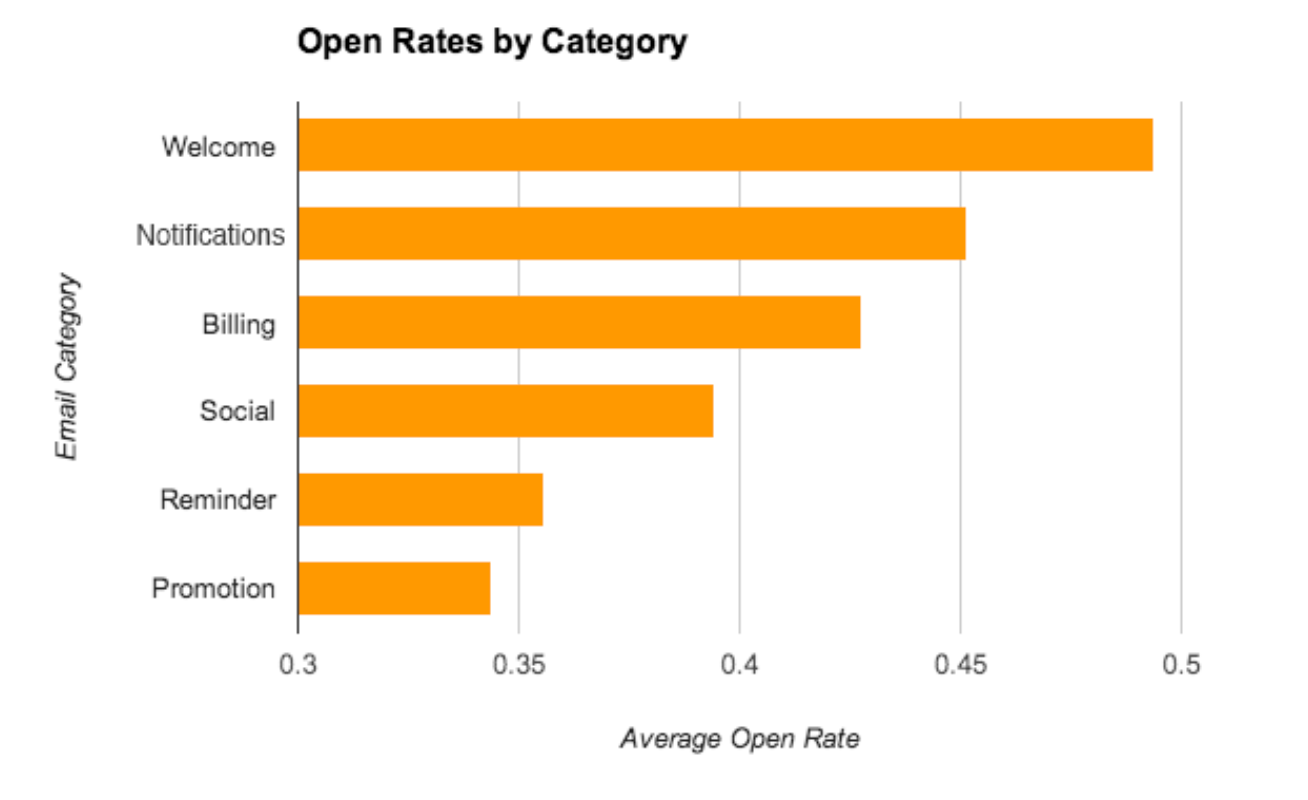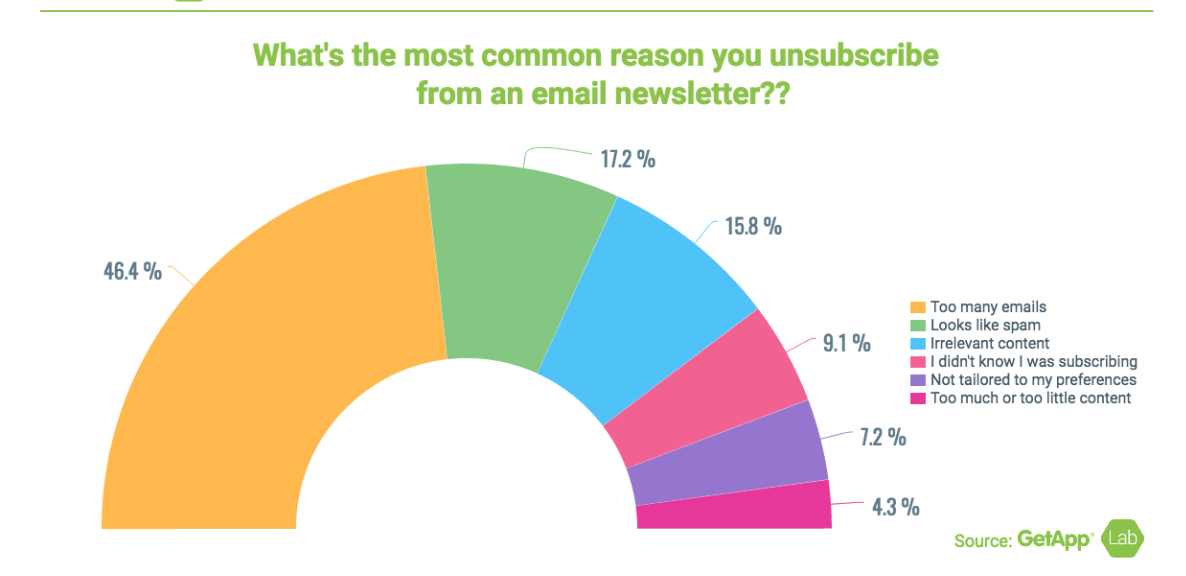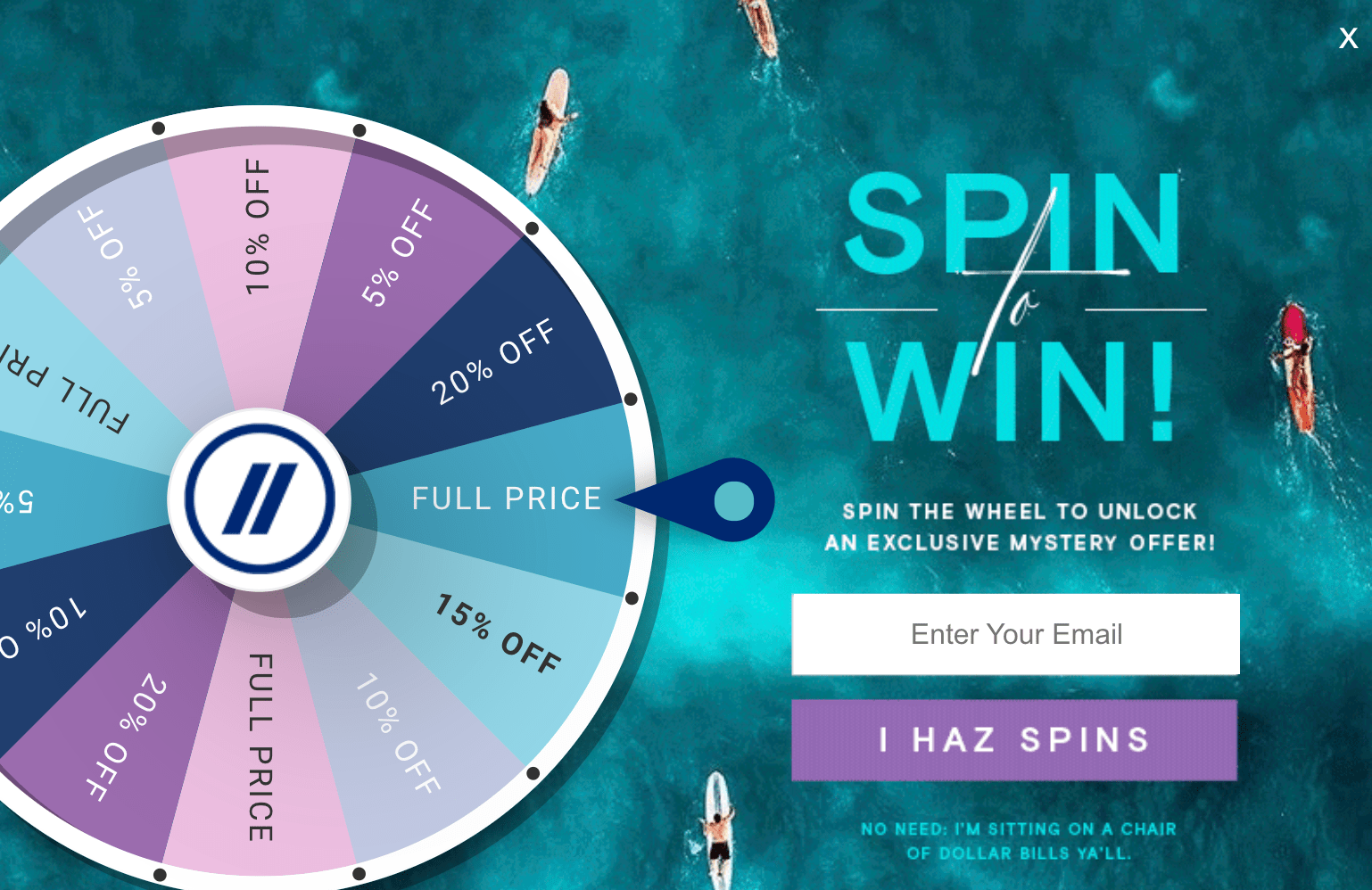It doesn’t matter what type of business you have or what industry you’re in; everyone needs to incorporate email campaigns into their marketing strategy.
There’s a common misconception that email marketing is dead. That’s just simply not the case.
So for those of you who are struggling with your email strategy, there’s a good chance that you’re making some mistakes. Don’t get me wrong—I’m not saying this to discourage you.
This is actually good news. All this means is that you need to make some adjustments with your approach to have more success.
One of the reasons why email marketing is so useful is because it delivers a high ROI. For every $1 you spend on email campaigns, you can expect an average return of $32.
81% of small business owners say they rely on email as their primary customer acquisition method. Additionally, 80% of small businesses say that email marketing is their primary method for customer retention as well.
Even if you’ve been having decent success with your email marketing campaigns in the past, you can still benefit from this guide.
Without even realizing it, you might be making mistakes that are holding you back. So if you’re ready to take your email strategy to the next level, review and correct these eight mistakes that should be avoided at all costs.
1. Not welcoming your subscribers
You just added a new subscriber to your email list. That’s great news!
This person was navigating through your website, made their way to a landing page, saw your email value proposition, and filled out the form fields required to sign up. They took a lot of steps, so clearly they’re interested in your website and brand.
Now what?
If you’re not planning to contact them until you send your next newsletter or coupon, then you’re making a big mistake. Welcome emails should be triggered immediately after a sign-up. That’s because they have the highest open rates compared to every other email category.

This makes a lot of sense. Think about it for a second.
Why did this person sign up?
Maybe you have an ecommerce shop and you promised something along the lines of exclusive discounts or offers for people who opt-in to your email list. Obviously, this visitor wants to buy something.
They’re on your site right now, and probably still have the browser open. But if you wait a day or a week to send that email, it’s going to be extra steps for that person to go back to your site and make a purchase. By now, the want or need for whatever you’re offering might be out of their mind.
On a per email basis, welcome emails generate 320% more revenue than other marketing messages. With that in mind, you can refer to my guide on how to generate sales with welcome emails.
Furthermore, welcome messages have a 336% higher transaction rate as well as a 196% higher click-through rate than any other email you send.
You need to take advantage of this. Yes, ideally you want this subscriber to be engaged with all of your emails down the road. But there’s no reason for you to wait. Get them to convert now by triggering a welcome as the first message in a drip campaign as soon as they sign up.
2. Forgetting a call-to-action
You think about your business and website all day, every day. Nights, weekends, holidays, it doesn’t matter; your business is always on your mind.
While it would be nice to think that your customers feel the same way as you do, that’s just not the case. So sending them a “hello” or “just checking in” message for no reason doesn’t add any value to their life.
All of your emails need to have a purpose and include a clear CTA that drives your goal home.
Otherwise, what do you expect the recipient to do with the message? Even if you’re sending a newsletter or some type of breaking news update, there should still be something in the message that entices conversions.
That’s not the only CTA mistake I see people make. On the flip side, instead of forgetting to include a CTA altogether, some site owners will go overboard and have four or five in the same message.
- Shop now
- Join our loyalty program
- Forward this message to a friend
- Share this on social media
- Sign up for our upcoming event
Alone, all of these CTAs are just fine. But when you add all of them to one message, the reader will get overwhelmed. Too many conflicting CTAs will just confuse your subscribers and end up hurting your conversion rates.
The content of the message should be priming and setting up the call-to-action. For example, if you’re releasing a new product, the CTA should be about buying. If you’re hosting an event, the CTA should be about signing up. For those of you who want to promote both of these, it needs to happen in two independent email campaigns.
3. Sending too many emails
Just because someone subscribed to your email list, it doesn’t give you the right to bombard them with messages all day.
The average person who works in an office receives 121 emails per day. That’s more than 44,000 emails each year!
So it’s no surprise that the number one reason why people unsubscribe from email lists is because they get too many messages.

Think about this for a moment. Put yourself in the shoes of a consumer.
How often do you check your emails and feel annoyed about all of the messages you have? This drives me crazy.
You don’t want people to have that association with your website and brand.
They should be happy when they get a message from you, not feel annoyed. Remember, they signed up to get messages from your website, so they obviously have some interest in your content.
Realistically, people aren’t going to shop every day or visit your website every day. This is something that you need to accept.
So I would limit your email promotions to once per week at the most.
You can even allow subscribers to set up their preferences when they sign up. Ask them the communication frequency that they want, as well as the type of messages that they prefer. Then segment your subscribers accordingly based on their answers.
4. Not segmenting subscribers
If you have one long master email list where every subscriber receives the same content at the same time, you’re doing it wrong. This is a huge mistake.
I just briefly explained during my last point how some people may want messages more or less frequently than others. Some subscribers may only want promotions and coupons, while others want your newsletter. Everyone has different needs and preferences.
For example, let’s say you run an ecommerce shop. A 20-year-old male subscriber isn’t interested in the same products as a female subscriber in her 50s. So sending them the same message is not a winning strategy.
Take a look at how these marketing metrics increase as the result of segmenting emails.
You’ll get more opens, revenue, and leads, while simultaneously increasing customer retention, acquisition, and transaction rates.
Furthermore, studies show that 60% of people will delete an email that they find irrelevant. 27% of people unsubscribe from irrelevant emails and 23% mark them as spam.
That’s right. Even if you’re not sending emails too frequently, your subscribers can still unsubscribe. But segmenting subscribers decreases the likelihood that your content will be perceived as irrelevant.
- Location
- Age
- Sales cycle
- Language
- Lifetime value
- Interests
- Browsing behavior
- Previous purchases
These are all common starting points for segmenting your email lists. Learning how to deliver relevant content by segmenting your email subscribers needs to be a priority.
5. Delaying campaigns
I regularly consult with lots of different website owners and businesses. When we talk about email marketing, lots of them have the wrong impression about when email campaigns should be sent.
Let me give you an example. I’ll use nice and round numbers to make it easy.
Say you have 1,000 email subscribers currently on your list. You sent out a message to all of them last week. You’re ready to run a new campaign this week, but you only gained ten new subscribers since your last campaign.
That’s not an excuse to put off the campaign.
But all too often I see business owners delay campaigns until they get more subscribers. As long as you’re not sending the messages too frequently, you can still deploy a new campaign to the same people, regardless of how many subscribers you gained or lost in between messages.
Your current subscribers are already familiar with your brand. The probability of selling to a current customer is 60 to 70%. But the chances of selling to a new customer is just 5 to 20%.
Based on these numbers, there’s no reason for you to hold off. Plus, any new subscriber should be getting a welcome email, which we discussed earlier in this guide. So you’ll be able to target them with an offer right away. For everything else, pick a schedule and stick to it. Stop coming up with excuses for delaying new campaigns.
6. Neglecting mobile users
I’m assuming that most of you will be using a computer to craft your email marketing messages. On these devices, everything looks great.
Time to send it out to your subscribers, right? Not so fast.
You need to check and see how your message looks from mobile devices. Most email marketing software out there will have mobile-optimized features.
But the best way to do this is by sending a test email to yourself. I have a category on my email marketing list for office and executive. Basically, it’s just a few of my email addresses. I always send content to this group first, so I can check everything before it goes out to the masses.
Look at which devices people use the most to check their emails.

Smartphones are by far the most popular devices for people of all ages.
So even if your message is technically mobile-friendly based on the test run through your email software, there are other things you should keep in mind.
Avoid long blocks of text. Something that’s two or three lines on a desktop computer could up being ten lines on a 4-inch smartphone screen.
Your email should have visuals, but don’t rely too heavily on images. Here’s what I mean by this. Some email apps won’t automatically display images. So if your entire message is based on the context of your picture, you might be out of luck.
To fix this mistake, you’ve got to know how to boost sales by accommodating the needs of mobile users.
7. Sending unprofessional messages
Earlier I explained why you shouldn’t delay campaigns. But with that said, emails shouldn’t be sent in a matter of minutes either. Take the same approach that you would if you publishing a blog or adding anew landing page to your website.
Plan it out. Create an outline. Write the copy. Put it through some editing software. Proofread, and then proofread it again. Slang, spelling errors, and improper formatting will not reflect well on your business.
Imagine getting an email from a high-end brand trying to sell you a $2,500 watch. But the message is filled with type-os and grammar mistakes. Are you going to buy that watch?
Probably not. It looks like a poor reflection of that company as a whole.
People think that if you don’t take the time to do something as simple as writing an email, what other shortcuts are you taking?
The reply to address for the email should be your business. Not your old screen name @hotmail.com. You should also A/B test all of your emails for formatting purposes. All of this will ensure that your messages look as professional as possible.
8. Not prioritizing sign-ups
Your email marketing campaigns will only be as good as your subscriber list.
It doesn’t matter if you have great content in your mobile-optimized message with the perfect CTA and professional design. If you only have 30 people to send it to, you can’t expect great results.
I realize that email lists don’t get built overnight, but this needs to be something that you’re always working at. No number is ever high enough.
If you just have “sign up for our emails” buried somewhere in the corner of your website, it won’t generate subscribers.
Remember, people are getting bombarded with nearly 1,000 emails per week. They won’t be signing up to receive more unless they have a good reason.
Check out his popup from the Blenders Eyewear homepage.

It’s a creative approach to collect emails.
First of all, you can’t miss it because it takes up nearly the whole screen while a user is browsing. Since they operate an ecommerce site, it’s safe to assume that the visitors are interested in their products.
By offering a discount in exchange for an email sign up, they’re essentially killing two birds with one stone.
- Add an incentive for purchases
- Gain email subscribers
Refer back to what we discussed earlier in terms of a welcome message. When a visitor signs up in a situation like this, it’s absolutely necessary that they are welcomed with the discount immediately.
Even if you don’t have an ecommerce shop, you still need to prioritize sign-ups and add value to potential subscribers. Offer them free downloads, video tutorials, or other types of exclusive content for email opt-ins.
Conclusion
Email marketing is still alive and thriving. Everyone needs to make this a priority.
But some people are doing email marketing wrong. After reviewing this guide, you might have just realized that you fall into that category.
Don’t worry. These common mistakes are fairly easy to correct.
Identifying them is the hardest step. But now that you know what needs to be done, you can make those adjustments and apply the changes to your email marketing strategy moving forward.
